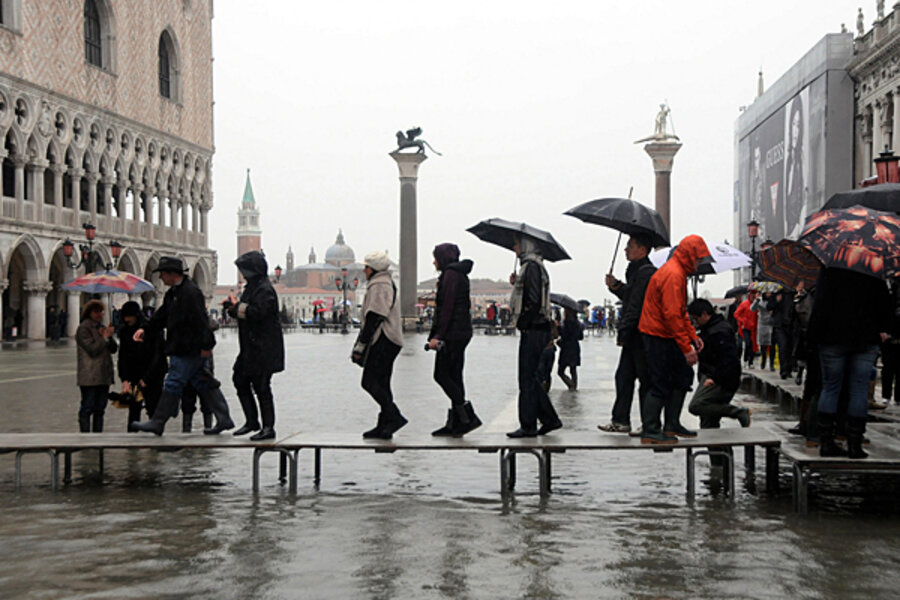Italy goes big to save Venice as it sinks into the sea
Loading...
| Cambridge, Mass.
Venetians have been coping with tidal flooding, or “acqua alta,” for centuries. A recent study suggests the problem may be worsening faster than previously believed.
But a multibillion-dollar system to be implemented starting next year could help prevent major flooding, according to two engineers who presented the project yesterday at the Massachusetts Institute of Technology (MIT) in Cambridge, Mass.
According to scientists from the Scripps Institution of Oceanography at the University of California, San Diego, the University of Miami, and Tele-Rilevamento Europa, an Italian company specializing in ground deformation measurement, the lagoon city is sinking, and won’t stop any time soon.
The team, who published their findings in the March issue of Geochemistry, Geophysics, Geosystems, a journal of the American Geophysical Union, combined GPS and space-borne radar information on the lagoon over the past 10 years and came to the conclusion that the city is sinking about two millimeters (0.08 inches) per year. This contradicts previous studies, according to which Venice’s land subsidence, the scientific term that refers to its slow sinking into the waters, had stopped after the city discontinued groundwater pumping in the 1990s, as reported by the Italian newspaper Il Gazzettino.
“It’s a small effect, but it’s important,” lead author Yehuda Bock said in a press release.
In 20 years, the study says, 80 millimeters (3.2 inches) of the lagoon will be taken over by the sea. But that is not the only thing Venetians should be worried about: The city is also tilting eastward, a problem the authors of the research say wasn’t detected in other studies.
So, is Venice doomed? Perhaps not. First of all, some question the study’s methodological approach. Pierpaolo Campostrini, director of Corila, a Venice-based research center that studies the lagoon, told Italian daily Corriere della Sera that subsidence may not be constant. “It could accelerate or slow down,” he said.
Then there is Mose, a complex 5 billion euro ($6.5 billion) flood-prevention system part of which will be operational in 2013 – 10 years after the project, one of Italy's largest public works, first began. Mose engineers Maria Teresa Brotto and Giovanni Cecconi were at MIT yesterday to present the project, which MIT faculty helped to develop. Mose’s four barriers, placed in the water at the lagoon’s inlets, are designed to rise with the water level, thus protecting the lagoon from flooding.
The goal, Mr. Cecconi said, is “to keep the water level under 100 centimeters [3.28 feet]” in the city. Critics of the project, however, are concerned about its environmental impact and its maintenance costs, which Ms. Brotto said will amount to 15 to 20 million euros per year.





